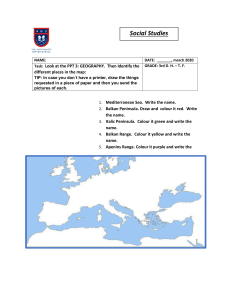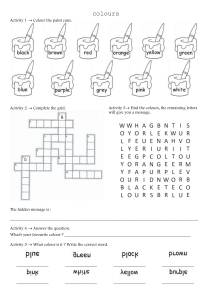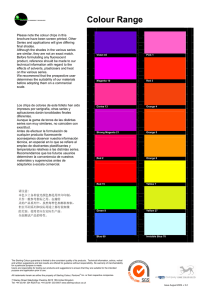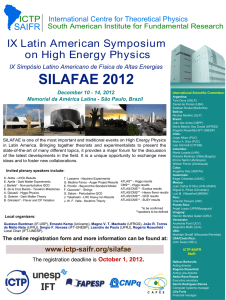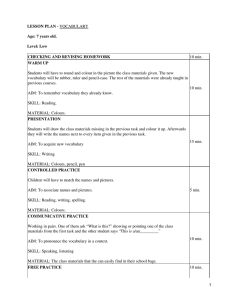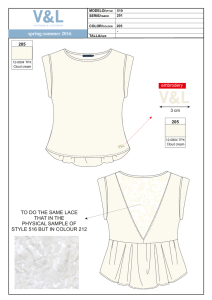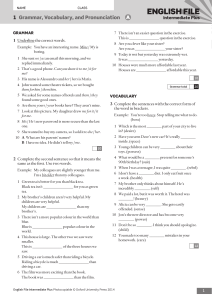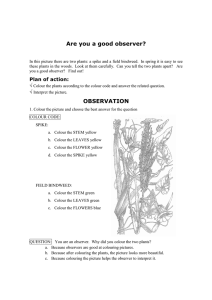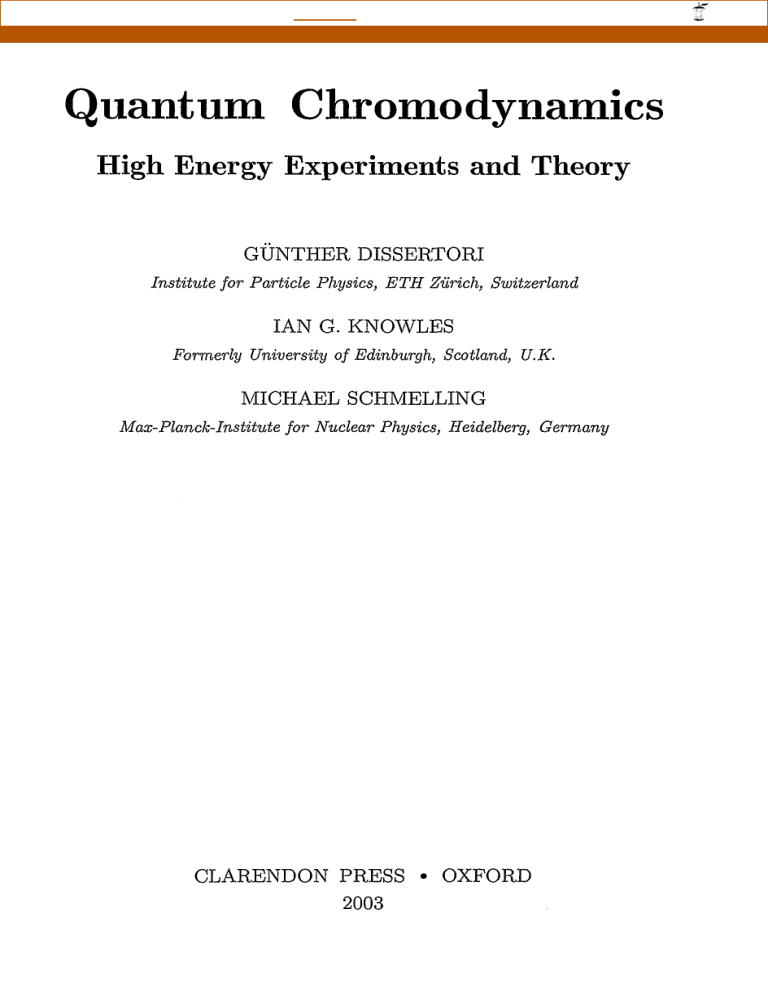
View metadata, citation and similar papers at core.ac.uk brought to you by CORE provided by CERN Document Server Quantum Chromodynamics High Energy Experiments and Theory GUNTHER DISSERTORI Institute for Particle Physics, ETH Zurich, Switzerland IAN G. KNOWLES Formerly University of Edinburgh, Scotland, U.K. MICHAEL SCHMELLING Max-Planck-Institute for Nuclear Physics, Heidelberg, Germany CLARENDON PRESS " OXFORD 2003 CONTENTS Notation 1 Introduction 2 The development of QCD 2.1 Experimental evidence 2.1.1 The quark model 2.1.2 The quark parton model 2.1.3 Colour 2.1 .4 Other puzzles 2 .2 The QCD Lagrangian 3 The theory of QCD 3.1 QCD as an SU(3) gauge theory 3.2 The QCD description of basic reactions 3.2 .1 Electron-positron annihilation 3.2 .2 Lepton-hadron scattering 3.2.3 Hadron-hadron scattering 3 .3 Born level calculations of QCD cross sections 3.3.1 e+e- annihilation to quarks at C(a°) 3.3.2 e+e- annihilation to quarks at C(as) 3.3.3 Gauge invariance of the QCD Lagrangian 3 .3 .4 The evaluation of colour factors 3.4 Ultraviolet divergences and renormalization 3.4.1 Self-energy and vertex corrections 3.4 .2 Renormalization 3.4 .3 The renormalization group equations 3.4.4 Calculating the RGE coefficient functions 3.4 .5 The running coupling and quark masses 3.4.6 An explicit example 3 .5 Infrared safety 3.5.1 Infrared cancellations 3.5 .2 e+e- annihilation to hadrons at NLO 3.5 .3 Infrared safe observables 3.6 The QCD improved parton model 3.6.1 DIS at the parton level 3.6.2 DIS at leading order 3.6.3 A heuristic treatment of factorization 6 6 6 8 15 19 21 25 25 31 34 38 52 62 62 70 74 79 80 81 87 93 96 98 103 106 106 108 114 117 118 120 121 CONTENTS 3 .7 3 .8 3 .6 .4 DIS at next-to-leading order 3 .6.5 The evolution of the parton density functions 3.6 .6 Leading logarithms 3.6.7 The analysis of ladder diagrams 3.6 .8 The Drell-Yan process The treatment of soft gluons Hadronization models 3 .8 .1 Space-time structure of multi-hadron events 3 .8 .2 Independent hadronization 3 .8.3 String hadronization 3.8.4 Cluster hadronization 3.8 .5 A comparison of the main hadronization models 128 135 139 144 149 153 157 158 161 162 168 171 4 Monte Carlo models 4.1 Fixed-order Monte Carlos 4.2 All-orders Monte Carlos 4.2.1 The parton evolution equations 4.2 .2 Branching kinematics 4.2 .3 Time-like Monte Carlo algorithm 4.2.4 Space-like Monte Carlo algorithm 4.2.5 Soft gluon logarithms 4.2.6 The colour dipole model 4.2.7 The soft underlying event model 4.3 Multi-purpose event generators 4.3.1 Using event generators 179 179 181 182 184 185 187 190 196 200 202 202 5 Experimental set-up 5.1 Accelerators 5.1 .1 Accelerator systems 5.1 .2 Beam optics 5.2 Detectors at high energy colliders 5 .2.1 Tracking detectors 5 .2.2 Calorimeters 5 .2.3 Passage of particles through matter 5.2.4 Particle identification 5.2.5 ALEPH : an example of a LEP detector 206 206 208 211 213 215 216 220 221 223 6 QCD analyses 6 .1 General concepts 6.1 .1 Event selection 6.2 Observables 6.3 Corrections 6.3 .1 Detector corrections 6.3 .2 Hadronization corrections 6.4 Systematic uncertainties 228 228 230 235 240 240 241 243 CONTENTS 6.5 Examples 6.5.1 Structure function measurement at HERA 6.5 .2 Inclusive jet production at the TEVATRON 6.5.3 Jet rates at LEP 244 244 250 255 7 Structure functions and parton distributions 7.1 Charged lepton-nucleon scattering 7 .1.1 Neutral current interactions 7.1.2 Charged current interactions 7.1.3 The low-x and low-Q2 region 7.1.4 The gluon density in the proton 7.2 Neutrino-nucleon scattering 7 .2 .1 Experimental issues 7.2.2 Measurements of F2 and xF3 7.2.3 The gluon distribution 7.2.4 The strange quark distribution 7.3 Sum rules 7.3.1 The Adler sum rule 7.3.2 The Gross-Llewellyn Smith sum rule 7.3.3 The Gottfried sum rule 7.3.4 The momentum sum rule 7.3.5 Sum rules for polarized structure functions 7.4 Hadron-hadron scattering 7.4.1 The Drell-Yan process 7.4 .2 The W rapidity asymmetry 7.4.3 Direct-photon production 7.4 .4 Inclusive jet production 7.5 Global QCD analyses 258 260 260 264 269 273 277 279 280 285 285 288 288 289 290 290 291 292 292 294 295 297 299 8 The 8.1 8.2 8.3 305 306 307 309 309 310 312 313 314 315 316 316 320 320 321 321 8.4 8.5 8 .6 8.7 strong coupling constant Theoretical predictions Comparison and combination of results Inclusive measurements 8.3 .1 The ratios R1, and R, 8.3.2 Measurement of as from RT 8 .3 .3 as from sum rules Measurements of as from heavy flavours 8.4.1 Decays o£ heavy quarkonia 8.4 .2 Lattice calculations Scaling violations 8.5 .1 Scaling violations in fragmentation functions 8.5.2 Scaling violations in structure functions Measurements at hadron colliders Global event shape variables 8.7.1 Theoretical predictions xiv 9 CONTENTS 8.7.2 Event shape variables 8.8 Analytical approaches to power law corrections 8 .9 Jets in deep inelastic scattering 8 .10 Summary of as measurements 322 326 329 329 Tests of the structure of QCD 9.1 Parton spins 9.1.1 The quark spin 9.1.2 The gluon spin 9.2 Flavour independence of strong interactions 334 334 334 336 340 344 10 Tests of the gauge structure of QCD : colour factors 346 10.1 Three-jet variables 351 10.2 Four-jet variables 358 10 .3 Combination of three- and four-jet variables 10 .4 359 Information from the running of as 362 10 .5 Information from jet fragmentation 363 10 .6 Limits on new physics 11 Leading-log QCD 11 .1 The structure of the parton shower 11.2 Momentum spectra 11.3 Particle multiplicities 11.4 Isolated hard photons 11.5 Subjet multiplicities 11 .6 Breit frame analyses 365 365 366 369 372 373 375 12 Differences between quark and gluon jets 12 .1 Theoretical expectations 12.2 Extracting quark and gluon jet properties 12.3 Experimental properties of quark and gluon jets 12.3.1 Topology dependence of jet properties 12.3.2 Multiplicities 12.3.3 Jet profiles 12.3.4 Fragmentation functions 12 .3.5 Particle content 376 376 377 380 380 381 387 388 389 13 Fragmentation 13.1 Identified particles 13.1.1 Multiplicities 13.1 .2 Momentum spectra 13.2 Inter-jet soft gluons and colour coherence 13 .2.1 The string effect 13.2.2 Colour coherence in hadron-hadron collisions 13.3 Two-particle correations 13.3.1 Proton-antiproton correations 392 394 394 397 398 399 400 402 402 CONTENTS 13.3 .2 Strangeness correlations 13 .3 .3 Bose-Einstein correlations 13.4 Colour reconnection xv 404 406 410 14 Summary 413 Appendices 415 A Elements of group theory A.1 Basics of Lie groups A .2 The U(N) and SU(N) groups A.3 Colour factors 415 415 421 423 B Building blocks of theoretical predictions B.1 The Feynman rules of QCD B.2 Phase space and cross section formulae 425 425 427 C Dimensional regularization C.1 Integration in non-integer dimensions C .2 D-dimensional -y-matrix algebra C.3 D-dimensional phase space C.4 Useful mathematical formulae 429 429 433 433 435 D R y, D .1 D.2 D .3 D.4 and R r for arbitrary colour factors The running coupling constant and masses Theoretical predictions for Ry The theoretical prediction for RI The theoretical prediction for R r RI 436 436 438 439 440 E Scaling violations in fragmentation functions E.1 Definitions E.2 The flavour non-singlet case E.3 The flavour-singlet case E.4 Fragmentation functions and hadron spectra E.5 Electroweak weight functions 442 442 443 444 445 446 F Solutions 447 References 506 Index 524
